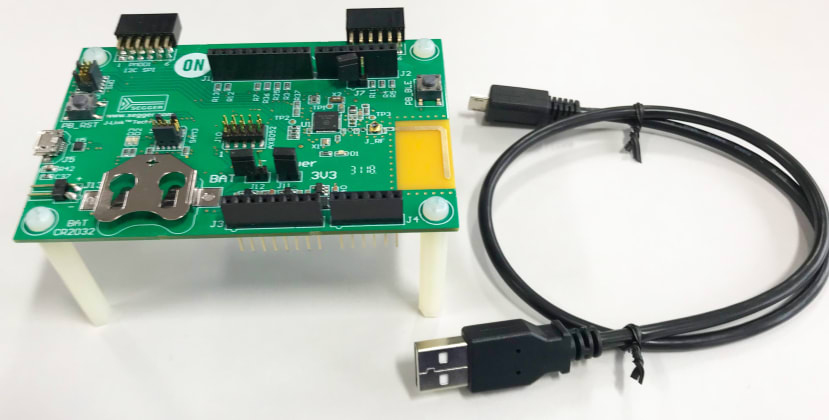onsemi and BLE 5
Follow articleHow do you feel about this article? Help us to provide better content for you.
Thank you! Your feedback has been received.
There was a problem submitting your feedback, please try again later.
What do you think of this article?
It doesn’t seem all that long ago when the general answer to the question, “what is the range of Bluetooth?” was “about a metre less than you need it to be”. But you have to give the Bluetooth SIG (special interest group) credit for their tenacity, driving the technology from a temperamental geek-toy to a pretty ubiquitous and handy tool for short-distance connectivity by the time the version 5.0 spec rolled out, at the end of 2016.
The big reveal for the 5.0 spec was that all the improvements were in BLE (Bluetooth Low Energy), including two new PHYs (PHYsical layer transceivers) that offer applications the ability to select double data rate (2Mb/s) communications or 4x greater range (nominally, up to 250m).
The 5.1 spec, released at the end of January 2019, adds (among other things) direction finding [using either “Angle of Arrival” (AoA) or “Angle of Departure” (AoD) methods for pinpointing the location of a device to the centimetre] and fast connection using more aggressive Generic Attribute Profile (or GATT) caching, where clients can skip the service discovery stage when nothing has changed.
All of these improvements have vastly expanded the application possibilities for Bluetooth; almost as if the Bluetooth SIG were trying to make BLE the major enabler technology for domestic and industrial edge tier IoT systems…
RSL10
Which brings us rather neatly to what we are talking about today: the onsemi RSL10 (172-3431) .
This system on a chip (SoC) is a full baseband controller and RF transceiver supporting all major Bluetooth profiles, with 36 profiles and services certified, including Rezence for wireless charging. Rezence (which comes under the AirFuel Alliance these days) uses magnetic resonance to charge single or multiple devices simultaneously, which gives you some freedom for where you place the RSL10 with respect to the charger when you want to give it some juice. That could include using the RSL10 in a medical implant.
The target market for the RSL10 is applications where low power consumption is critical, like IoT medical devices. It is designed to be able to run off batteries or power supplies ranging from 1.1V to 3.6V, without the need for a DC/DC converter. When it is running, it has a miserly peak transmit current draw of 8.9 mA and a peak receive current draw of 5.6 mA; while in deep-sleep mode, the current draw drops to an incredibly low 50nA from a 1.25V supply.
What makes those power figures all the more amazing is all the included hardware-processing support. It uses a 48 MHz ARM Cortex-M3, supported by ON Semi’s own LPDSP32: a 32-bit dual core, Harvard architecture, digital signal processor (DSP) for executing maths-intensive algorithms like wireless audio codecs.
Added to this is 384 Kbytes of flash memory, analog and digital interfaces (GPIOs, I2C, SPI, LSADs, PCM etc.), and an analog-to-digital converter (ADC) to connect to sensors.
In its smallest package size, this is all squeezed into 5.5mm x 5.5mm. All in all, a pretty impressive little SoC. For developers on a tight schedule, this can be bought in a Fully-Certified (Worldwide) system in package (SiP) - eliminating months of antenna design and certification headaches.
Trying Out The RSL10
There are a couple of dev kits that simplify trying out the RSL10, plus an RSL10-based USB dongle that you can use (with the associated software) to interface with your dev kit and debug your application. I have the BDK-GEVK dev kit (181-4231) , which looks like this:
So let’s fire up the Eclipse-based SDK and have a little look round:
So as you can see in the video, the RSL10 SDK uses the familiar Eclipse IDE and is well resourced with application examples.
Final Thoughts
The RSL10 SoC is a versatile and computationally powerful device packed into a tiny package that requires very few external components to get up and running. Its power consumption stats are pretty amazing too. It also has a software development environment that will be pretty familiar to most embedded developers.
Altogether these make the RSL10 a great candidate for any BLE application, especially if space is at a premium.


